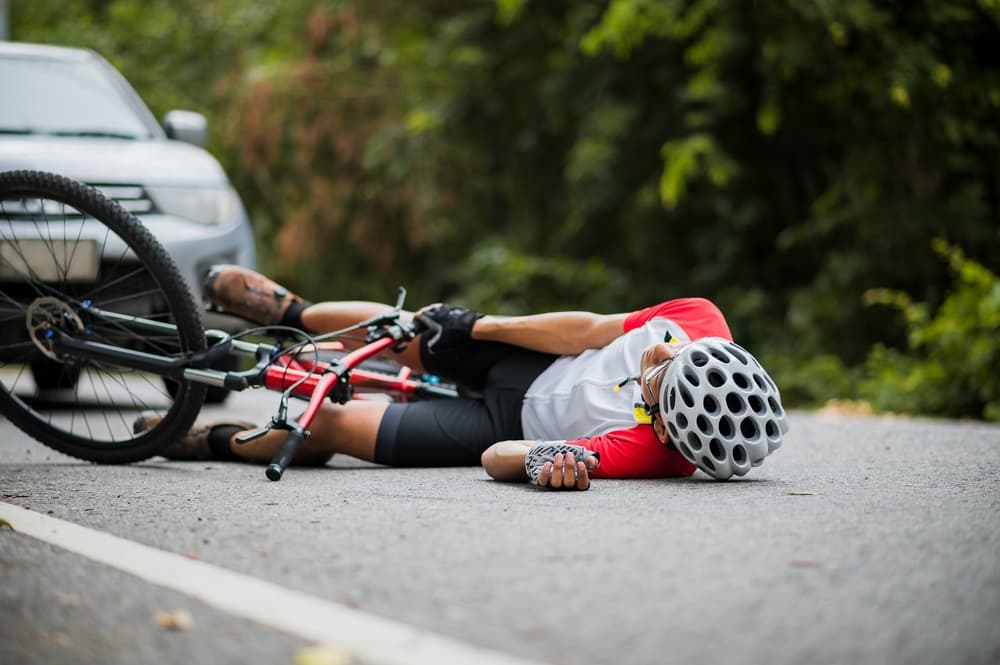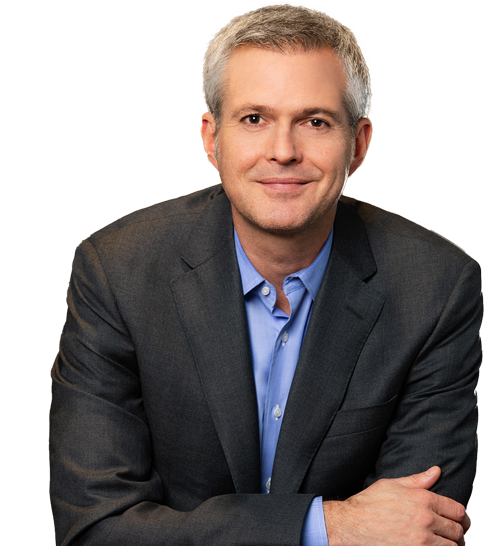
Cycling in Minnesota is more than a way to get around—for some, it's a lifestyle. From Minneapolis’s award-winning bike lanes to the scenic stretches of the Dakota Rail Trail, thousands of people ride every day for fun, exercise, or their daily commute. While Minnesota remains one of the most bike-friendly states in the country, accidents still happen. When they do, the aftermath can devastate you and your family.
If you’ve been hurt—or lost someone you love—because a driver or another party failed to watch out for cyclists, you’re likely dealing with pain, stress, and financial strain you never asked for. You're also probably asking yourself the same question many others have in your situation: What are the most common types of bicycle accidents in Minnesota? Knowing what kinds of crashes happen most often can help you better understand what went wrong—and what legal options you may have.
No one should be left alone trying to pick up the pieces after a preventable bike accident. If someone else caused your injuries, speaking with a Minnesota bicycle accident lawyer can help you figure out the next steps. You don’t have to sort this out on your own. A free consultation can give you the information and support you need right now.
Statistics on Bicycle Accidents in Minnesota

Bicycle crashes may seem like random tragedies, but the numbers tell a different story. Patterns emerge—many of them tied to predictable risks that repeat year after year.
According to crash facts from the Minnesota Department of Public Safety, more than 700 reported bicycle crashes occur statewide each year. Urban areas like Minneapolis, St. Paul, Duluth, and Rochester tend to see the highest number of collisions, particularly during spring and summer months when more riders are on the road.
Over 80% of these accidents result in injury. While some are minor, others lead to permanent damage or even loss of life. In many cases, driver error—like failing to yield or being distracted—is to blame. Cyclists have far less protection than drivers, which means even low-speed impacts can cause serious harm.
Understanding the most common crash types can give you insight into how these accidents happen and why accountability matters.
- Door Zone Collisions
- Intersection Accidents
- Distracted Driving Incidents
- Road Hazard Accidents
- Rear-End Collisions
- Bike Lane and Trail Accidents
- Child Bicycle Accidents
Door Zone Collisions
These crashes may seem minor on paper, but for cyclists, they can be devastating. The "door zone" refers to the space next to parked cars—usually within 3 to 5 feet—where a suddenly opened car door can strike a passing bicyclist.
How These Accidents Happen
Most door zone collisions occur when a driver or passenger swings their door open without checking for bike traffic. Riders may have no time to swerve or stop, and the force of the impact can send them over their handlebars and into traffic or the pavement.
In busy areas like Uptown Minneapolis, Dinkytown, and Grand Avenue in St. Paul—where cars often park directly next to bike lanes—these accidents happen more than people realize.
Legal Considerations
Under Minnesota law, drivers must check for traffic before opening a vehicle door. Failing to do so can make them liable for injuries caused. Cyclists are expected to ride a safe distance from parked cars when possible, but not at the risk of entering moving traffic.
How to Prevent Them
Riders can reduce the risk by avoiding the "door zone" when it's safe to do so, and staying alert when riding alongside parked cars. Drivers can use the “Dutch Reach” technique—opening the door with their far hand—to force a shoulder check for cyclists.
Intersection Accidents

Intersections are where most bicycle accidents in Minnesota happen—and they’re often the most severe. These are points where cyclists and drivers must cross paths, and even a moment of misjudgment can lead to serious injury.
Right Hook and Left Cross Collisions
A right hook collision happens when a driver turns right across a bike lane or shoulder, cutting off a cyclist going straight. These are common near intersections like Franklin Avenue and Hiawatha in Minneapolis, where bike traffic flows parallel to busy vehicle routes.
A left cross accident occurs when a driver turns left at an intersection, misjudging the cyclist’s speed and hitting them head-on or from the side.
Minnesota Intersection Laws for Cyclists
Cyclists in Minnesota have the same rights and responsibilities as motorists when using the road. At intersections, they must obey traffic signals and signs. Drivers, in turn, must yield to cyclists who have the right of way.
Fault and Liability
In most cases, drivers who fail to yield to cyclists during turns are considered at fault. However, fault can be shared if a cyclist was riding against traffic or ignoring signals. Each case depends on the details.
Distracted Driving Incidents
Distraction behind the wheel continues to be a top cause of bicycle accidents across the state. When a driver isn’t paying attention, a cyclist’s smaller size and profile make them easier to miss.
Common Distractions That Endanger Cyclists
- Texting or using a phone
- Eating, drinking, or adjusting the radio
- Reaching for items inside the vehicle
- Talking to passengers or daydreaming
A rider in St. Louis Park or Brooklyn Park may be doing everything right—but if a driver doesn’t see them, the consequences can be deadly.
Minnesota Laws on Cell Phone Use
Minnesota's hands-free law makes it illegal for drivers to hold a phone while driving. Yet enforcement gaps remain, and not all distractions are phone-related. Proving distraction can involve witness accounts, surveillance footage, or phone records.
How Distraction Affects Fault
If a distracted driver hits you while riding, their behavior often establishes clear negligence. This can strengthen your case and influence compensation. Compensation for a bicycle accident may include coverage for medical expenses, lost wages, rehabilitation, and pain and suffering—especially when the crash results in serious or long-term injuries.
Road Hazard Accidents
Bicycle riders in Minnesota contend with some tough road conditions, especially during fall, winter, and early spring.
Seasonal Hazards
Potholes, black ice, slush, snowplow debris, and loose gravel are just some of the dangers riders encounter across places like Duluth, Moorhead, and Bloomington. Trails and bike lanes may not be plowed or salted in time, increasing the risk of falls.
City or County Liability
When a poor road condition contributes to a crash, the city or county may be responsible—if they knew (or should’ve known) about the issue and failed to act. Claims against government entities require strict notice deadlines and documentation.
Proving a Hazard-Related Claim
Take photos of the scene, your injuries, and your bike. If possible, report the condition to the local municipality right away. These steps help preserve your right to file a claim later.
Rear-End Collisions
While many assume cyclists are hit from the side, rear-end collisions are common and extremely dangerous—especially in low-light conditions.
Why These Crashes Happen

Rear-end accidents often involve a driver following too closely, speeding, or failing to see the cyclist altogether. In rural areas like Brainerd or Northfield, where shoulders may be narrow and lighting poor, the risk increases.
Visibility Issues in Minnesota
Winter months bring shorter days and more dimly lit streets. Snow can obscure bike lanes and make cyclists harder to see, especially in early morning or evening rides. Reflective gear helps, but it's not always enough when a driver isn't paying attention.
Legal Assumptions About Fault
Drivers who rear-end another vehicle—or cyclist—are typically presumed to be at fault unless they can prove the cyclist made a sudden, unsafe move. That presumption can play a big role in settlement negotiations or trial outcomes.
Bike Lane and Trail Accidents
Minnesota has a strong network of bike paths and lanes, including the Midtown Greenway and the Mississippi River Trail. But accidents still happen—even off main roads.
Infrastructure and Accident Risks
Not all bike lanes are well maintained. Cracks, debris, poor signage, and sudden merges with traffic create dangers. Collisions between riders, or with pedestrians or e-scooter users, are also possible.
Common Crash Scenarios
- A vehicle crosses into a bike lane without looking
- A cyclist exits a trail into an intersection with no clear signage
- Conflicts with other cyclists or runners on narrow shared paths
Shared Fault in Trail Accidents
When multiple parties contribute to a crash—such as another rider swerving into your path or a pedestrian walking in a marked bike lane—liability can be divided. Minnesota’s comparative fault system comes into play here.
Child Bicycle Accidents
Accidents involving children are heartbreaking. They often raise different legal questions, especially when it comes to liability and safety expectations.
Different Standards for Children
Minnesota law recognizes that children don’t always behave the way adults do. Drivers in school zones or residential areas like Maple Grove or Eagan are expected to exercise extra caution when they see young riders.
School Zone Safety Rules
Speed limits are reduced in school zones, and failure to yield to children on bikes may lead to higher penalties. If your child was hit while riding to or from school, especially in marked areas, liability may fall squarely on the driver.
Parental Responsibility
In most cases, parents aren’t legally responsible for accidents involving their child’s riding behavior—unless they knowingly allowed unsafe behavior. Still, insurance companies may try to shift blame, which makes strong legal representation even more important. Fighting the insurance company becomes necessary when they attempt to undervalue your claim or redirect liability, especially in cases involving children where fault can be unfairly contested.
Legal Recovery Options for Minnesota Cyclists

Recovering from a bicycle accident takes more than time. It often involves expensive medical bills, lost wages, and lasting physical limitations. Minnesota law gives injured cyclists several ways to pursue compensation.
How Comparative Fault Works
If both the cyclist and the driver contributed to the crash, Minnesota’s modified comparative fault system allows the injured rider to recover damages—as long as they’re less than 51% at fault. The total compensation gets reduced by the rider’s percentage of fault.
Insurance Coverage and PIP
Minnesota is a no-fault insurance state, so cyclists may be eligible for Personal Injury Protection (PIP) benefits from their own car insurance—even if they weren’t driving. If a vehicle caused the accident, that driver’s policy may also apply.
Statute of Limitations
Most bicycle accident claims in Minnesota must be filed within six years of the crash. However, cases involving wrongful death have only three years. If poor road maintenance or inadequate signage caused your crash, the municipality or state agency responsible for road work may be liable. Claims against government entities may have shorter deadlines and additional legal complexities. You need a lawyer to help you navigate the process and fight against the sovereign immunity standard.
No matter the deadline that applies to your case, failing to act in time could cost you the right to recover anything. Plus, the sooner you contact a Minnesota bicycle accident lawyer to begin, the better they can preserve valuable evidence and build a strong claim for you. Don’t delay seeking legal representation.
Damages Available
Depending on your case, you may be able to recover for:
- Medical expenses
- Lost wages and reduced earning ability
- Pain and suffering
- Property damage
- Loss of enjoyment of life
- Permanent disability or disfigurement
Contact Our Experienced Minnesota Bicycle Accident Lawyers Today
A bicycle accident can turn your life upside down in a split second. But you don’t have to carry the burden alone. Legal support can make all the difference—especially when you're up against insurance companies trying to avoid responsibility.
At Fields Injury Law, we help injured cyclists across Minnesota fight for fair compensation and hold negligent drivers accountable. Whether your crash happened in Minneapolis, St. Paul, Rochester, or anywhere in between, our legal team will take the pressure off you and handle the details.
Let us help you move forward with confidence. Contact Fields Injury Law today for a free consultation. We'll review your case, explain your options clearly, and work to get you the financial recovery you deserve.

